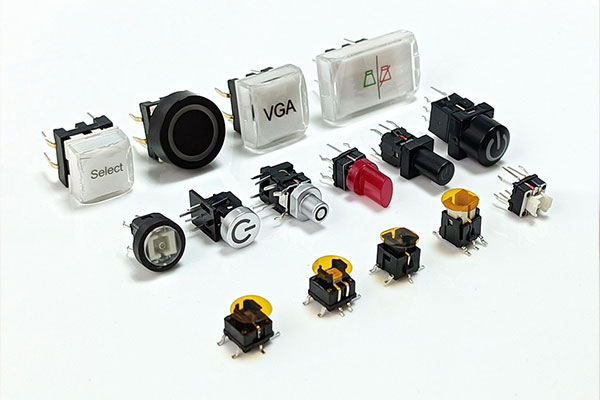Knowledge
Explanation for led tact switch
The LED tact switch is a sophisticated electronic component that merges tactile operation with LED illumination, becoming indispensable in modern device design. Unlike basic switches, it delivers a clear physical "click" when pressed, confirming activation, while an integrated LED provides visual cues, enhancing user interaction across countless applications.

At its core, the LED tactile switch (a term often used interchangeably with LED tact switch) relies on a spring mechanism to create tactile feedback, ensuring users feel the switch engage without relying solely on sight. The embedded LED, available in colors like white, amber, or RGB, serves multiple roles: indicating power status, signaling modes, or highlighting the switch’s position in low-light environments. This combination makes it ideal for devices ranging from remote controls to medical monitors, where clarity and reliability are key.
For space-constrained designs, the mini LED tact switch is a game-changer. Measuring as small as 3x3mm, these compact switches retain full functionality—tactile response, LED brightness, and durability (up to 50,000 operations). They are widely used in wearables, smartwatches, and IoT sensors, where miniaturization without performance loss is critical. Manufacturers achieve this by integrating micro-LEDs and precision-engineered contact points, ensuring consistent performance in tiny packages.
The illuminated tact switch category, which includes LED variants, emphasizes the symbiosis of touch and light. These switches often feature translucent housings that diffuse LED light evenly, preventing glare while ensuring visibility. In contrast, the PCB illuminated tactile switch is specifically designed for direct mounting on printed circuit boards (PCBs), with solder terminals that secure it firmly. This integration streamlines assembly in mass-produced devices like routers, gaming consoles, and automotive dashboards, where stable PCB connections are essential for longevity.
PCB illuminated tactile switches also offer design flexibility, with options for surface-mount (SMD) or through-hole mounting, and customizable LED voltage (typically 2V–5V). Their robust construction resists dust and vibration, making them suitable for industrial equipment and outdoor electronics.
In essence, LED tact switches—whether mini, PCB-mounted, or part of the broader illuminated tact switch family—redefine user interaction. By blending tactile certainty with visual guidance, they adapt to diverse needs: from the compact precision of wearables to the rugged reliability of industrial controls. As devices grow smarter and more compact, these switches remain vital, ensuring every press is both felt and seen.
RELATED NEWS
- Can a metal button switch be integrated with indicator lights 2025-12-08
- The difference between a momentary and a latching metal button switch 2025-12-08
- What size is the broadcasting illuminated push button 2025-12-03
- Video illuminated push button 2025-12-03
- Are DIP switches still widely used nowadays 2025-11-03
CATEGORIES
LATEST NEWS
CONTACT US
Contact: Bella
Phone: 15999819066
E-mail: rucoe@rucoe.com
Whatsapp:+86-15999819066
Add: Taoyuan Street, Nanshan, Shenzhen
